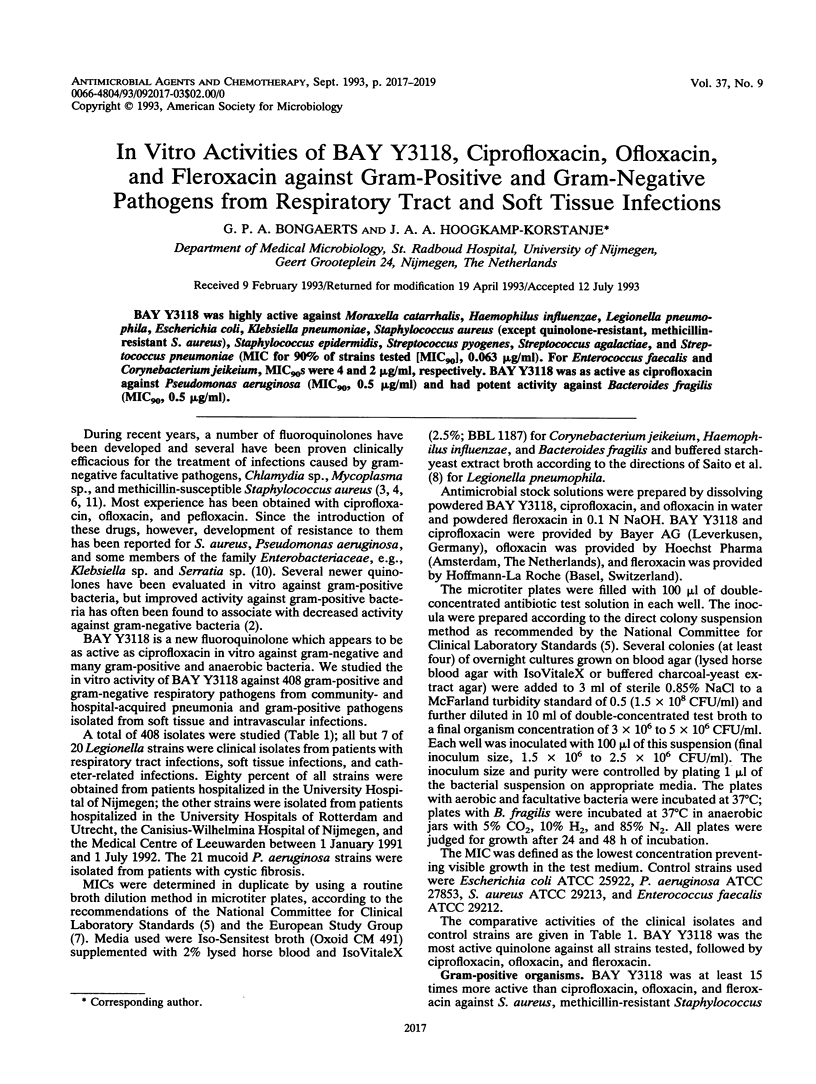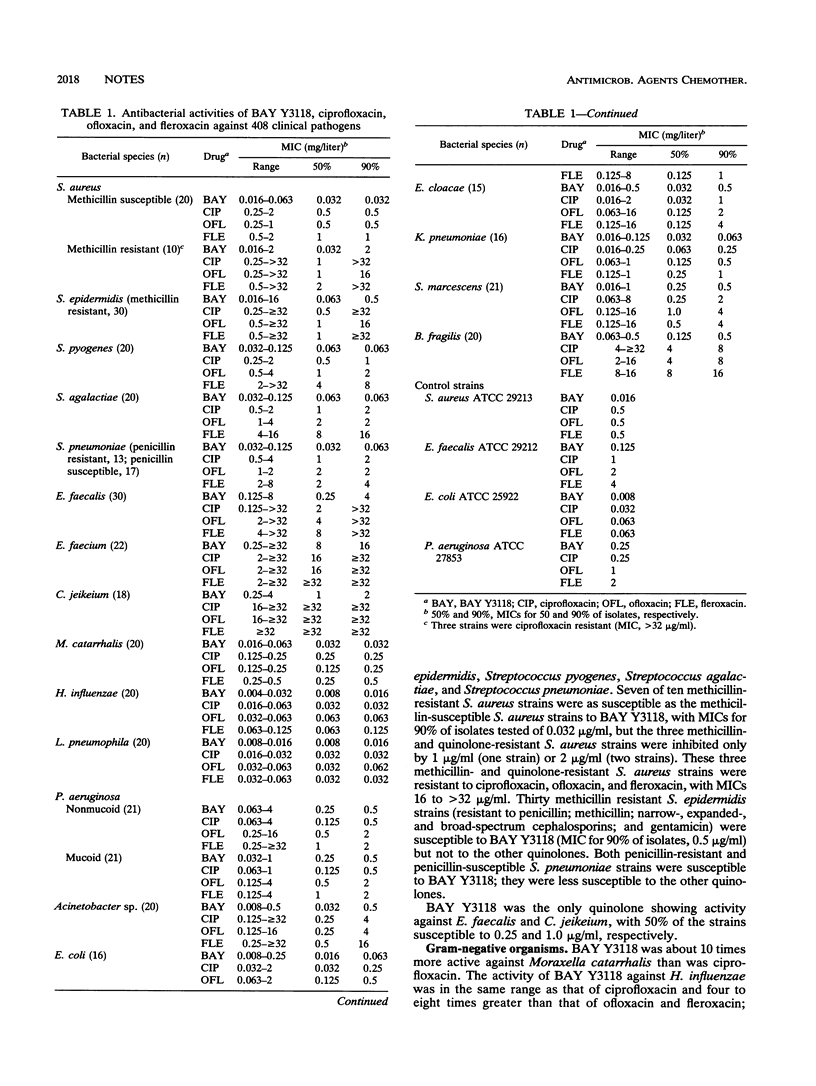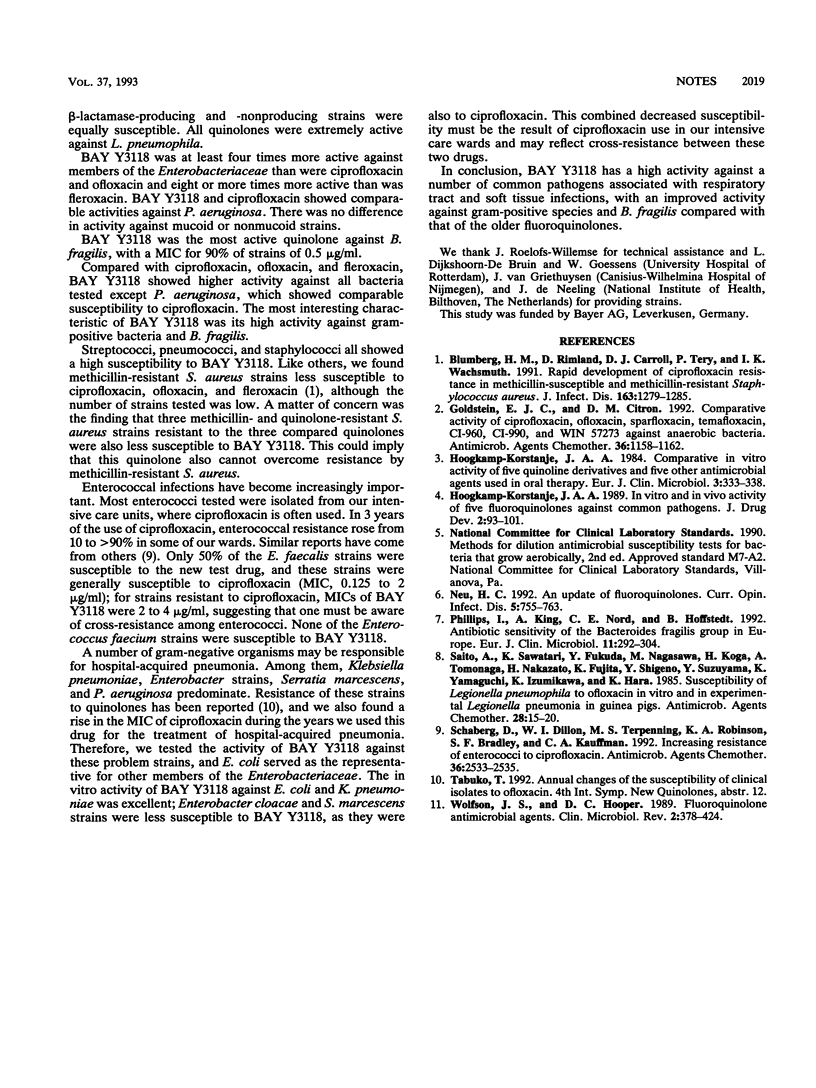Abstract
BAY Y3118 was highly active against Moraxella catarrhalis, Haemophilus influenzae, Legionella pneumophila, Escherichia coli, Klebsiella pneumoniae, Staphylococcus aureus (except quinolone-resistant, methicillin-resistant S. aureus), Staphylococcus epidermidis, Streptococcus pyogenes, Streptococcus agalactiae, and Streptococcus pneumoniae (MIC for 90% of strains tested [MIC90], 0.063 micrograms/ml). For Enterococcus faecalis and Corynebacterium jeikeium, MIC90s were 4 and 2 micrograms/ml, respectively. BAY Y3118 was as active as ciprofloxacin against Pseudomonas aeruginosa (MIC90, 0.5 micrograms/ml) and had potent activity against Bacteroides fragilis (MIC90, 0.5 micrograms/ml).
Full text
PDF


Selected References
These references are in PubMed. This may not be the complete list of references from this article.
- Blumberg H. M., Rimland D., Carroll D. J., Terry P., Wachsmuth I. K. Rapid development of ciprofloxacin resistance in methicillin-susceptible and -resistant Staphylococcus aureus. J Infect Dis. 1991 Jun;163(6):1279–1285. doi: 10.1093/infdis/163.6.1279. [DOI] [PubMed] [Google Scholar]
- Goldstein E. J., Citron D. M. Comparative activity of ciprofloxacin, ofloxacin, sparfloxacin, temafloxacin, CI-960, CI-990, and WIN 57273 against anaerobic bacteria. Antimicrob Agents Chemother. 1992 May;36(5):1158–1162. doi: 10.1128/aac.36.5.1158. [DOI] [PMC free article] [PubMed] [Google Scholar]
- Hoogkamp-Korstanje J. A. Comparative in vitro activity of five quinoline derivatives and five other antimicrobial agents used in oral therapy. Eur J Clin Microbiol. 1984 Aug;3(4):333–338. doi: 10.1007/BF01977489. [DOI] [PubMed] [Google Scholar]
- Phillips I., King A., Nord C. E., Hoffstedt B. Antibiotic sensitivity of the Bacteroides fragilis group in Europe. European Study Group. Eur J Clin Microbiol Infect Dis. 1992 Apr;11(4):292–304. doi: 10.1007/BF01962068. [DOI] [PubMed] [Google Scholar]
- Saito A., Sawatari K., Fukuda Y., Nagasawa M., Koga H., Tomonaga A., Nakazato H., Fujita K., Shigeno Y., Suzuyama Y. Susceptibility of Legionella pneumophila to ofloxacin in vitro and in experimental Legionella pneumonia in guinea pigs. Antimicrob Agents Chemother. 1985 Jul;28(1):15–20. doi: 10.1128/aac.28.1.15. [DOI] [PMC free article] [PubMed] [Google Scholar]
- Schaberg D. R., Dillon W. I., Terpenning M. S., Robinson K. A., Bradley S. F., Kauffman C. A. Increasing resistance of enterococci to ciprofloxacin. Antimicrob Agents Chemother. 1992 Nov;36(11):2533–2535. doi: 10.1128/aac.36.11.2533. [DOI] [PMC free article] [PubMed] [Google Scholar]
- Wolfson J. S., Hooper D. C. Fluoroquinolone antimicrobial agents. Clin Microbiol Rev. 1989 Oct;2(4):378–424. doi: 10.1128/cmr.2.4.378. [DOI] [PMC free article] [PubMed] [Google Scholar]


